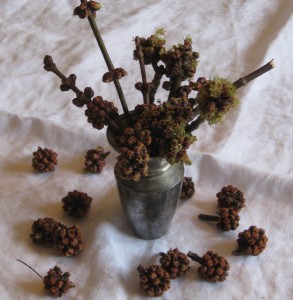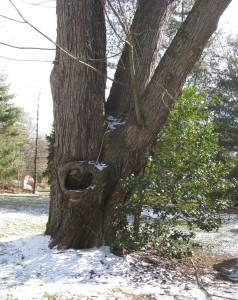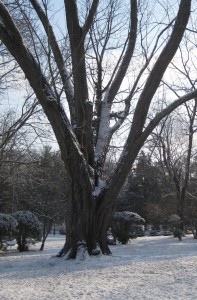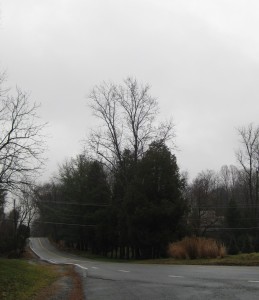Ashes to Ashes
On Ash Wednesday, we are urged to face a stark truth: we will not live forever. The certainty of our mortality should be evident as we daily confront our society’s latest egregious incidents of violent fatality. Where was today’s shooting? At a mall, an office, a restaurant, a church, or, most horrifically, at a school? Who were the heroes and innocents who died senselessly this week? Firefighters, doctors, nurses, teachers, small children, infants? Depending upon where you live, you may be mourning a different tragedy than the one that preys on my mind. There are so many tragedies in our world. Every day it becomes more difficult to say It can’t happen in my neighborhood.
Yet despite the ongoing exposure to such dire events, our culture is constantly blaring the message that if we spend enough on miraculous health and beauty products, if we make the right lifestyle choices, we can prolong our lives indefinitely. It promises us, repeatedly, that it’s in our best interests to extend the look of youth far beyond our youthful years. One of the worst things we can say about a celebrity is this: She’s looking her age. How shocking! How pitiful! Not enough botox, or botox gone bad. Excessive collagen, or inadequate collogen. A facelift that failed. A fanatical exercise regime that no longer does the trick. Her arms were once buff; now they’re stringy. The more beautiful one is in youth, the sadder seems the diminishing of that beauty with age.
Yesterday I caught a brief snippet of a TV soap opera that I admit I used to watch, on occasion. Well, not really watch. It happened to come on at a time when I needed a rest. It offered a distraction as I sat down to fold laundry, leaf through piles of papers and magazines for recycling, make get-well cards. Sometimes it lulled me to sleep, I have to say. This particular soap opera, even sillier than most, if possible, requires minimal attention, because it’s always the same. During my most recent viewing, it was immediately apparent that the same small group of characters was still soldiering on in scandalous banality, divorcing, remarrying, swapping spouses and children, re-betraying one another in bizarre ways. At a glance, the old gang looked very much the same. There was not a wrinkle, not a gray hair to be seen. Bodies were svelte, as always. But the faces were altered in odd ways: eyes slanted at more extreme angles, lips overly puffy, cheekbones higher, chins more pronounced, foreheads immovable as those of marble statues. The characters continue to behave in sophomoric, stupid ways, so it is fitting, perhaps, that they appear young.
In real life, though, is maturity so terrible? If we learn from our mistakes, we are not cursed to repeat them endlessly, like soap opera characters. As we mature mentally and spiritually, we will age, and our age will show.

I’m not saying I’m immune to the horror of growing old. I’ve begun to avoid harsh lighting, I’ve noted, with acute dismay, what an awkward turn of my head can do for the skin on my neck. The magnifying mirror is my frenemy. I silently bewail the effects of gravity. Just as the classic birthday card line attests: Old age is not for sissies. It’s for the the wise, the well-adjusted, the truly mature.
On Ash Wednesday, we are called to confront the fact that no magic potion or surgery will keep old age forever at bay. And while death claims the young, as we see all too often, most of us are granted the bittersweet privilege of aging in this lifetime. This is, indeed, a gift; it allows us the opportunity to grow toward wisdom, toward maturity. It means the chance to come to terms with the hollowness of our culture of vanity, and to learn to live accordingly. The visible effects of age are reminders that death awaits us, unavoidably. The physical body decays even as we live, earthly beauty is fleeting, and material possessions are transitory. Once we acknowledge these truths, we are free to recognize the real value of what will not pass away:
And now, these three abide: faith, hope and love. But the greatest of these is love. –1 Corinthians 13: 13
On Ash Wednesday, we thank God for not leaving us to eternal decay. Through the love of Jesus Christ we are rescued from the dust, from perpetual darkness. Our future, as God’s beloved children, is one of light and glory, of joyful wisdom that, in its zeal, perfection, and yes, its maturity, will remain forever young, forever beautiful.

*************************************************
For further discussion of the meaning of Ash Wednesday, see last year’s post: What’s with the Ashes?, February 22, 2012.
Fat Tuesday Sunshine
On this Fat Tuesday afternoon here in northern Virginia, the sun is emphatic in its brightness and temperatures are well into the mid-50s. Kiko again sought out his customary spring spot on the terrace. He reminds me of a northern tourist revelling in the winter Caribbean sunshine.
The sunshine was so abundant, so luxurious, and so relaxing,
that Kiko had no choice but to sleep.
Before long he woke up, overheated. It’s February 12, and he had to find some shade.
What is this Season? Winger? Sprinter? Springer?
There will be a blizzard raging this weekend just to the north of the DC area. It seems that northern Virginia has already received our meager portion of accumulation. We awoke to areas of white mushy crystals around the bases of trees. Pine boughs drooped slightly under a thin coating of watery ice. Now the temperature is rising and a light rain is falling. Kiko evaluated conditions from the dry warmth of the front hall and deemed it too yucky to hurry out on our morning walk. He is now cuddled on the office sofa, and I am very thankful. My daughter, of course, takes the lack of snow as yet another personal affront by her old nemesis, the Weather.
What should we call this ambiguous season? It’s winter one day, spring the next. I’m more used to this pattern than many people, having grown up in Atlanta, where 70-degree temperatures routinely alternate with those of 30- or 40-degrees. I remember when Virginia had four distinct seasons, but nowadays, they’re more of a blur.
Over the past week, the extreme cold has subsided here. As the fine layer of snow in our yard disappeared, it revealed one of our first signs of spring: the dark red clusters of buds that have fallen from our old silver maples. These seem to appear earlier and earlier every year. It’s not just a few buds, either, but many, heavily sprinkled over the yard. The readiness of our big, battered maples continues to amaze me. From the first cold days of winter, they are already anticipating spring. Like good scouts, they are prepared, standing sentry for the first warmer rays of sunshine. And during these recent winters, they receive many confusing signals: Get ready! No, wait! Yes, go ahead! No, no, no, hold up– it’s snowing! Wrong again–it’s only rain. I feel bad for our trees; such see-sawing conditions must be hard on their elderly systems.

The melting snow revealed further evidence of a new season. Bright yellow-green daffodil shoots are already emerging from the ground. Unless you’re in the extreme north, you’re probably noticing them, too. The beginning of February really seems too early for them to be heading up and out, but who am I to judge?
Another unexpected sign of spring at our house is this: Kiko has already been dozing in his favorite sunny spot on the back terrace by the garage doors. I watched him as he settled there after an unsuccessful pursuit of a squirrel at the bird feeder. In years past, I don’t remember ever seeing him there before April or so.
And finally, what about the robins? I know I can’t be the only one to notice that the robins are choosing to remain with us in Virginia all winter long, just as they always do in Georgia. I used to remember noticing their distinct absence, as well as their much-anticipated return. They typically left around the first of December and showed up again with the melting snows of early March. But this winter and last, having apparently adjusted to the weather roller coaster, they haven’t bothered to fly south. They are hopping across our thawing lawn right now, drilling for worms.
To the many disappointed kids like my daughter, I’m sorry that the hoped-for snow is nothing but rain. I’m sorry today’s slush wasn’t even enough to warrant a two-hour delay. And to those of you in the path of this weekend’s storm, good luck, and take care. For all of us, spring (or sprummer?) will be here sooner than we expect. Although who can say what season will follow?

In a Snippy Household, the One Who Will Not Talk Back
At home, our finely tuned radar is on near-constant alert for the slightest hint of sarcasm, negativity, discourtesy of tone or, heaven help us, an ill-chosen word. The faintest traces of insult or anger, whether real, or more typically, imagined, rarely elude us. With the barest minimum of words exchanged, we may be suddenly engulfed in a family-wide conflagration. When this happens, nothing helps but time, and time apart. With some stomping and huffing, we retreat to our own respective areas in the house. Sometimes, from my husband and daughter, the stomping is accompanied by loud whistling. Speech is pointless for a while, because we will be certainly be misunderstood.
But one member of our family maintains an admirably even keel. Our dog is either above, or beneath all this drama. Kiko never reacts badly, never acknowledges an insult, and he never makes a cutting remark.
I talk to Kiko a lot.
When he and I are home alone during the day, I keep up a running, one-sided conversation, heavy on the exclamation points. It’s typical, mindless doggie talk: Hello sweet baby! Are you the sweetest little fella? Of course you’re the sweetest fella! You’re such a velvety baby! You have the best fur! Are you the best old angel? Of course you’re the best old angel! You’re my angel! I love you so much! I just love you! Sometimes I tell him, very nicely, of course, that he’s a terrible boy, a very bad sweetie, just because I can, and it doesn’t matter one whit to Kiko. I think it’s to my credit, at least, that I don’t speak in a high-pitched, artificial tone often preferred when addressing babies and dogs. I use my normal voice to repeat my plodding menu of banalities.
As dogs go, Kiko is not particularly expressive. He does not gaze into my eyes with love and admiration. If I want that, I go down the street to see George, the big-hearted golden retriever. Kiko’s response to my ongoing chatter is subtle. My first words may be greeted with the raise of a doggie eyebrow. I’m reminded of Chad Everett, on whom I had a middle school crush when he starred as the charming, handsome Dr. Joe Gannon on TV’s Medical Center. While Dr. Gannon’s lifted brow indicated kindness and concern, Kiko’s indicates an openness to any words of consequence, such as Wanna take a walk? Wanna go for a ride? Want some cheese? To these questions he responds with a head tilt, perhaps followed by a stretch and a vigorous full-body shake. Barring these welcome phrases, he remains largely inert, with the possible exception of his ears. Unlike Chad Everett, Kiko has a wide range of motion in his ears, which may move independently of one another as though in vague reply. Otherwise, he’s utterly, quietly motionless. If I hover or confine him too long in a hug, he may sigh. I take this as a signal to back off and shut up. But that mild protest is as close to a rebuke as he ever makes.
You fellow dog owners understand the benefits of talking to your dog. As you know, we converse with our dogs not for their sake, but for our own. It makes us feel better. For me, there is hardly a situation that cannot be eased, at least a little, by making ridiculous remarks to my dog. Considering the atmosphere of irascibility that may reign in our household, it’s wonderful to know that no matter what I say to Kiko, peace and equanimity will prevail.

Early-Morning Irritability
I try not to use my blog to rant about life’s trivial annoyances. But today I’ll risk sounding like a pouty child. This morning, a series of minor nuisances really ticked me off.
It began around 6:20, when I applied myself, with much concentration, to the vexing mystery of the moment—how to get the little rubber ring to stay put on the lid of my daughter’s new thermos. I persisted, but had no success. The bell of the toaster oven dinged. Because I had devoted too much pointless effort to the thermos, the mini-bagels I had been toasting for D’s breakfast were burned beyond rehabilitation.
It was at this inopportune moment that my husband wandered blithely into the kitchen. He remarked, in all innocence, that he couldn’t understand why D, who is in the process of choosing the classes she will take next year in high school (high school!), needs to continue studying English. She can read. She’s a good writer. What more does she need to know about English?
That comment, following so quickly on the heels of my thermos and bagel difficulties, was the last straw. My poor fragile camel’s back cracked sharply in half. Some say, I responded, through slightly clenched teeth, that there is value in literature. While reading good books is unlikely to lead to a well-paid career . . .no . . . it’s likely to ensure the absence of a well-paid career, it offers some help in coping with life’s disappointments. I stopped there. I did not add this further petulant bitterness: that reading offers the possibility of occasionally eking out some small measure of joy in a world rife with uncooperative thermos rings, annoying toaster ovens and clueless husbands whose idea of enlightening reading is an online windsurfing forum. H wisely kept quiet until he left for work.
And then Kiko and I went out for our walk. Another lovely light snow had fallen. I expected that the walk would lighten my mood. But no. Paved surfaces were far more slippery than I had expected, and Kiko insisted on attempting a break-neck pace, determined to run, if not in the road, then as close to it as possible, where the cars were hurtling by us more aggressively than usual. The salt from the road frequently stung his paws, prompting him to limp flamboyantly, one foot in the air, yet without lessening his speed. I had to repeatedly kneel down to brush the snow from his paw pads. An icy, gusty wind whipped the snow into my eyes, and the blue glare of the sun on the white ground was blinding. My ears were wet and freezing under my scarf, while my hands were too hot in my mittens. I was reminded vividly of why I find skiing so unpleasant. Our morning outing was an ordeal to be suffered through.
On a happier note, it sure is good to be back home. Alone, except for my silent dog, now sleeping peacefully in another room.
*******************************************************
H telephoned later, warning me about the icy roads and clearly trying to appease my irrational meanness. I’m feeling better now. As Gilda Radner’s Roseanne Roseannadanna used to say: Never mind.

Why Not Just Let the Dog Out?
As suggested on my About Wild Trumpet Vine page, I often write about walking my dog. Those who can’t imagine why anyone would choose to write about dog walking are unlikely to be regular readers. There may be some of you who wonder why my dog has to be walked multiple times a day in every kind of nasty weather. Why not just let him out, occasionally, in the fenced back yard? Doesn’t he have the good sense to relieve himself, perhaps, as we had hoped, in the woodsy, secluded area behind the garage? These are good questions. The answer to the first is complicated; the answer to the second is simple: NO.
Kiko, true to his Shiba Inu nature, is emphatically clean and fastidious. This sounded like an excellent trait when we were considering our future family dog. And in many ways, it is a good trait. Our yard is never messy, and our carpets are holding up well. But obsessive cleanliness has its dark side. Kiko refuses to sully not only his home, but also the broad vicinity of home.
Several years ago we tried cutting down on the walks. After Kiko had injured his back leg in a reckless jump from our unfinished back porch (see A Puppy Days Delayed Replay, Nov. 2011), the vet advised keeping walks to a minimum. At the time, I was recovering from surgery, and the prospect of fewer winter dog walks was appealing.
Ever since he was a puppy, Kiko has indicated his desire to go out by staring fixedly at me, then pawing at the door. Instead of gathering my cold-weather gear and the leash, as I had typically done before, I began opening the door that leads to our porch and enclosed back yard. Kiko would rush through his doggie door with a great sense of urgency and purpose, make a speedy circuit of the yard, return immediately and begin pawing impatiently to come inside. This would be followed by another staring episode, another interior pawing at the door, another fast trip around the yard. We repeated the process so many times that I felt as though I was losing my mind. Kiko seemed to feel the same way. I could see his frustration: Why can’t we walk? I’ve got to get out of this stupid yard! This is my hunting and lounging area, not my potty place, for heaven’s sake!

I tried walking him on the leash in the back yard, but that only compounded the misery, adding mine to his. I invited neighborhood dogs over to visit, hoping they would mark and inspire Kiko. He remained uninspired and steadfast. His obstinacy is matched by the strength of his bladder; our dog is nothing if not continent. Kiko gave in a very few times, but only in the middle of the night and in hopeless, broken, pitiful desperation. The next day the routine would begin again. No break-through came, and the situation was intolerable. It wasn’t doing anything to further my recovery or my dog’s.
We went back to walking, much to Kiko’s relief, as well as mine. I brought new resolves of patience to the task. I’ve mentioned that despite the miles we cover together, Kiko’s on-leash behavior is generally less than stellar (see The Joys and Travails of Walking our Strange Little Dog, Oct. 2011). But I find it hard to blame him. My extremely social dog is under the thrall of his acute sense of smell. His nose serves as smartphone, Internet, Facebook, Twitter and Instagram, all rolled into one neat package that he cannot set aside. Kiko smells great troves of valuable information about his friends—Buster turned left at this corner, Annie says hi, Shyla wonders where he’s been, Lucy is tolerating the new foster puppies, and sweet three-legged Raven is having a good day. I hate to block my dog’s vast friendship network by dictating exactly where he can and cannot go.

After the painful, failed trial period of not walking, it seemed that Kiko’s behavior improved somewhat, or perhaps I simply chose to believe that it did. I had missed walking my odd little dog even as I tried to avoid it. Now, it’s a given that on the most frigid of mornings, I will be out with Kiko. I walk with him because I consider it my duty. It’s in our contract now. I stay out far longer than necessary because I enjoy it, despite the weather. It wasn’t Kiko’s fault that the tendrils of hair at the side of my face froze one day last week when it was 15 degrees. I had been breathing into my scarf, and the condensation turned to ice. We didn’t need to wander for an hour and a half (although cold days are Kiko’s preference). But I was well-bundled, and once we were out, in the still-snowy, beautifully frozen woods, spotting Kiko’s double, the red fox, the watchful pair of hawks, the pileated woodpecker and the white deer that roams our area, I didn’t want to hurry home.
What is this White Stuff?
We woke up this morning, unexpectedly, to snow. It wasn’t a lot of snow, but it was enough to cover the yard and nicely powder the trees and shrubs, to give the world a sort of winter facelift. It’s been ages since we’ve seen snow here in northern Virginia, so it was a welcome sight. Schools were delayed two hours, giving my daughter, a snow fanatic, the chance to enjoy it. The snow piled up prettily on the nandina berries, above.
Today’s snow is pleasant, attractive and manageable. I don’t miss the winters of constant snow, as my daughter does. When she was in preschool and kindergarten, seems like every Friday from December through February brought just enough accumulation to shut down the schools. The prospect of another snow day overjoyed her as much as it exhausted me. I don’t look back fondly on the years of blizzard after blizzard. I hated the many transportation worries. Will the schoolbus make it through? Will the steeply winding road home be passable? Should I cancel that appointment? What havoc will be wreaked by those drivers who have no business venturing out in such weather? Will my husband get stuck behind someone who is unwisely inching up the long hill, again? Will D and I be left to try to shovel the driveway alone, anxiously awaiting roadside updates from H?
The snowy weather ceased, of course, once H bought a snowblower. While he’s been itching to give it a try, I wouldn’t mind if he doesn’t need it again this winter. Or, maybe, to please him and D, he could use it just once. For their sake, I wouldn’t mind one lovely deep snow. While I’m wishing, I’ll wish for the flakes to start falling some Friday night after we’re all safely home.
The yard was covered, just barely, with snow. The trees and bushes were powdered white.
Kiko seemed to have completely forgotten that he had ever experienced snow before. He found it strange but exhilarating.
The first glimpse of the sun in the sky this morning could have been lifted from a Currier and Ives print.
Again, Sunny Spots for (Cat) Naps
After four days of leaden skies and drizzle, followed by the false promise of snow, which disappointed and infuriated my daughter, the sun finally made an appearance. Kiko and I were both relieved to be out in a dryer, more colorful world, and we walked longer than usual this morning. The sunshine was accompanied by icy breezes, and once home, it took a while to warm up. Kiko seemed to be overwhelmed by the sudden abundance of cozy, sunny patches for napping. He tried out several of his usual spots in the playroom before wandering off to the living room. The sun was shining like a spotlight on a red upholstered chair. I’ve never seen Kiko even consider hopping up on that chair. But it clearly summoned him today, and his eyes were closed before he had put his head down. Further support was offered for my husband’s claim that we share our home with a cat rather than a dog.

Cold, Miserable Rainy-Day Dog-Walking
The recent cold, rainy weather here in Virginia has been the sort that tests even the most dedicated dog walker. The mornings have brought no pastel watercolor skies, no evidence, really, at all, of the existence of a distant, light and life-giving golden orb. There is only a gradual diminishing of the steely gray darkness. The atmosphere of pervasive gloom is not lessened as the day progresses. It’s hard to look on the bright side when no bright side is visible.
On dreary wet mornings like this one, Kiko’s enthusiasm for the first outing of the day is, thankfully, muted. If the sound of rain is loud and continuous, he might remain curled in his bed, small and fox-like, for several hours. We have postponed that initial walk as late as 11:00 AM on some rainy days. I was hoping this would be the case today, but unfortunately it was not. I was able to delay him for about an hour, but no longer.
I cannot complain of being poorly equipped for dog walking in inclement weather. Prompted either by tender familial devotion or a determination that none of us would have an excuse for not walking the dog on wet days, my husband has outfitted the whole family with extensive rain gear. In addition to hooded, high-tech jackets, we have waterproof boots and pants. If it’s pouring rain, and if I can locate my rain pants (that’s a big if), I’m glad to pull them on over my jeans. More typically, I decide that the rain isn’t steady or strong enough to warrant leg protection. I usually regret this decision, as I did today.
Rain seems to bring out the absolute worst in Kiko’s on-leash behavior. You’d never know he is a Puppy Obedience School grad. (But we have the photo of him, looking ridiculous in a mortarboard hat, to prove it.) The wet weather apparently enhances the depth and variety of earthy smells, so Kiko dawdles excessively, his nose working furiously. Rainy-day walks seem to be, for my dog, the equivalent of science labs. Unless I tug him unmercifully, we inch along. Every clump of grass beckons, begging to be sniffed and sampled, its delicate taste evidently heightened by the rain. Every messy smudge on the road asks to be examined and identified. Dangerous human snacks like bony chicken wings are more likely to be discovered on rainy days, and I must fish them out of his mouth with my fingers. At least Kiko has outgrown his taste for earthworms. If he finds nothing of interest directly in front of him, he tends to stand transfixed, a model of indecision, checking the air for enticing aromas nearby. Finally, there’s what I call his fake-out marking, more prevalent in the rain. He smells a spot lingeringly and intently; he pauses, looks up, almost lifts his leg, yet decides against it.
The more impatient and miserable I become during these rainy walks, the slower Kiko moves. This morning I opted against bringing an umbrella. No matter how often I tugged my hood forward, it kept slipping back, letting rain drop into my eyes, ears and hair. Water trickled into the gap at my wrist between jacket and glove. My gloves were soon heavy and cumbersome. My formerly watertight boots have recently developed a leak, and the first puddle admitted a small flood. One foot was immediately drenched.
The final part of the walk is the worst, along a narrow county road that winds along by the stream bed. It’s picturesque, but treacherous. The nearly nonexistent shoulder is muddy, rutted and overgrown. I’m continually amazed at the cars that fly by, mere inches from my shoulder. I have been known, I admit, to shake my head slowly from side to side, or even to gesture forcefully, if not specifically, in hopes that some may think to slow down, or perhaps, when there is no oncoming traffic, to move closer to the center line. If I ever turn up in the “Public Safety Notes” of our free local paper, I predict it will be due to my encounter with some driver along this stretch of road. I hope it will involve no bodily harm to either party. I expect it will mention something like a “heated verbal exchange.”
For those of you, who, like me, are out there with your dog on dismal mornings, I commiserate with you. And for those who have no dog that requires walking, be sure to count this today as one of your blessings!
He looks so sweet–why can’t he sleep all day long?















